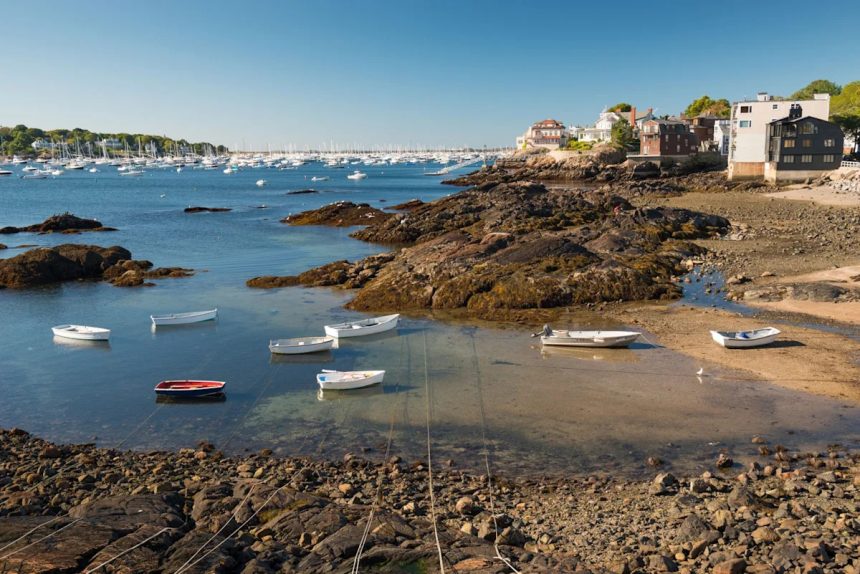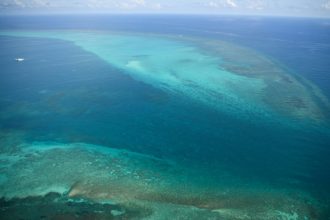It’s soothingly quiet now, but Marblehead’s picture-perfect horseshoe harbor was once bustling with fishing schooners and merchant trading vessels. But in the fall of 1775, this petite harbor on Boston’s North Shore played an integral role in the start of the United States Navy, which celebrates its 250th birthday this fall.
October 13 is the United States Navy’s official founding date, but the idea began in the summer of 1775 when General George Washington took command of the Continental Army in Cambridge, Massachusetts. Though then under siege in Boston, the Royalists were well fed and armed.
Thus, Washington formed the Continental Navy with Marblehead merchant Colonel John Glover, commander of the town’s land regiment. Together, they fit Glover’s schooner, The Hannah, with cannons and created the USS Hannah, the Continental Navy’s founding vessel. It went on to fight the first seaborne attack of the Revolutionary War.
The small Continental Navy took on the greatest naval force the world had ever known and turned the tide at the Siege of Boston, which ended in a Patriot victory in March 1776. Nearly 100 years later, the Marblehead Museum’s exhibit on the Revolutionary War is set to open in spring 2026.
Marblehead today
Marblehead’s beautiful harbor is used for leisure boating now, but both boaters and land-bound visitors are drawn to this sleepy town built on a rocky peninsula for its well preserved 18th century buildings, which are still part of everyday life.
Marblehead was first home to the Naumkeag, but in 1684 their land became part of the Massachusetts Bay Colony. Yingna Cai, Shutterstock
“I believe it’s the largest concentration of 18th century buildings in the U.S.,” says Lauren McCormack, executive director at the Marblehead Museum. “If you took the cars away, the streets look like the way they did back then.”
It’s quieter now, though back in 1775, “it was the sixth most populous place in the U.S.,” says McCormack. “It was an urban environment with lots of businesses supporting the maritime trade.”
What to do
Marblehead’s storied streets and shoreline make for delightful strolling. Old Burial Hill dates to 1638 and is one of New England’s oldest graveyards. Adjacent is Redd’s Pond, named for Wilmott Redd, the only Marblehead resident convicted and hung during neighboring Salem’s witchcraft trials. Crocker Park has excellent views of the harbor and Devereux Beach is one of several beaches in the area.
(Salem casts a spell—even without the witchcraft)
At the very end of Marblehead Neck, near Fort Sewall, Chandler Hovey Park reveals some of the once-abundant eponymous marble, which was sheared off and used to build Boston and beyond.
Marblehead was first home to the Naumkeag, but in 1684 their land became part of the Massachusetts Bay Colony. By 1700, Marblehead’s thriving shipbuilding, merchant, and fishing businesses created very wealthy merchants like Glover, and later on, Massachusetts Governor, Elbridge Gerry, which is where the term gerrymandering comes from.
No marblehead merchant was more wealthy than Colonel Jeremiah Lee, who built his flagship home on Washington Street in 1768. Now part of the Marblehead Museum, this massive structure is one of the most intact examples of Georgian architecture anywhere in the U.S. The grand hall’s wide plank mahogany flooring, matching commanding staircase, and hand-painted bespoke wallpaper imported from England, are much as Lee left them.
“It’s the only home left in the country to have intact, hand-painted, made-to-measure wallpaper like this,” says McCormack. “Stepping into the home now, it’s just as Lee would’ve seen it.”
The Marblehead Museum also oversees the “Civil War and Grand Army of the Republic” exhibit in the 1727-built Old Town House; and the gallery space on Washington Street housing primitive folk artist J. O. J. Frost’s paintings. Frost was born on Marblehead’s Front Street in 1852 and after retirement began painting scenes of the town’s daily life.
“Frost tried to document his memories and stories older people had told him,” says McCormack. “He used house paints on wood board, which has meant the paintings maintain their vibrancy of color. They really haven’t aged.”
Another place to view history is Abbot Hall. Built in 1876 and listed on the National Register of Historic Places, the Marblehead Historical Commission oversees many town treasures here, including the Maritime Museum and the deed signed between the Europeans and the Naumkeag.
One of Abbot Hall’s most popular artifacts is Ohio artist Archibald MacNeal Willard’s “The Spirit of ’76,” a large-scale romanticized painting depicting the Revolution 100 years earlier.
(This historic inn is located where the Revolutionary War began)
Where to stay and eat
In 18th century Marblehead, one of the most popular local dishes was Lucretia Brown’s Joe Froggers, a large, soft pancake-like cookie made from flour, lard, molasses, spices, and rum. Lucretia and her husband, Joe, were born into slavery, but freed when it became illegal to own the children of slaves. The couple ran Black Joe’s Tavern on Gingerbread Hill, where they sold Joe Froggers. Local sailors would take them to sea, as they would keep well.
Lucretia’s Joe Froggers is one of the few markers of African American life in 18th-century Marblehead, and the recipe is held in the Smithsonian Libraries’ collections. You can also try Joe Froggers at The Muffin Shop.
For a taste of latter-day local life, stop in at The Barnacle, a casual seafood restaurant and bar built atop a rock outcrop overlooking the harbor. The rear deck has marvelous water views and the small street side outdoor bar—accessed by careful navigation over exposed rock—is the perfect perch to watch over town life.
The Hotel Marblehead is set in a renovated Victorian Gothic former home on Pleasant Street, about 1.5 miles from downtown. Rooms and suites have a contemporary feel and a nautical flair, and bikes are available to borrow.
The Harbor Light Inn is a favorite for its central location on Washington Street. It has a small pool and a tavern serving drinks and casual bites.
(Lobster rolls and baklava ice cream: these are the dishes taking Boston by storm)
Linda Laban is a freelance writer covering arts and travel, and thousands and thousands of miles, all with her trusty sidekick Winnie the Cat by her side.









